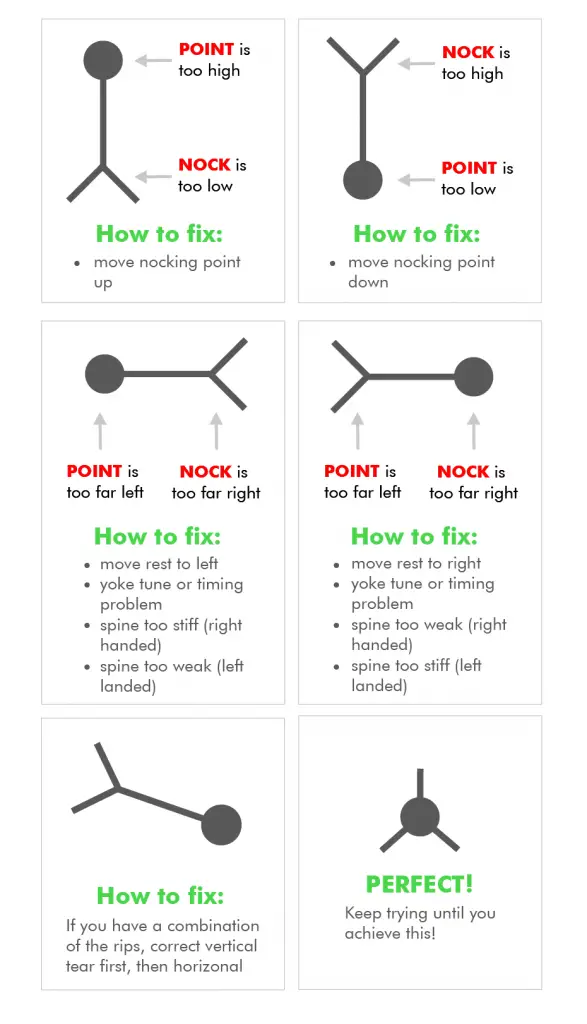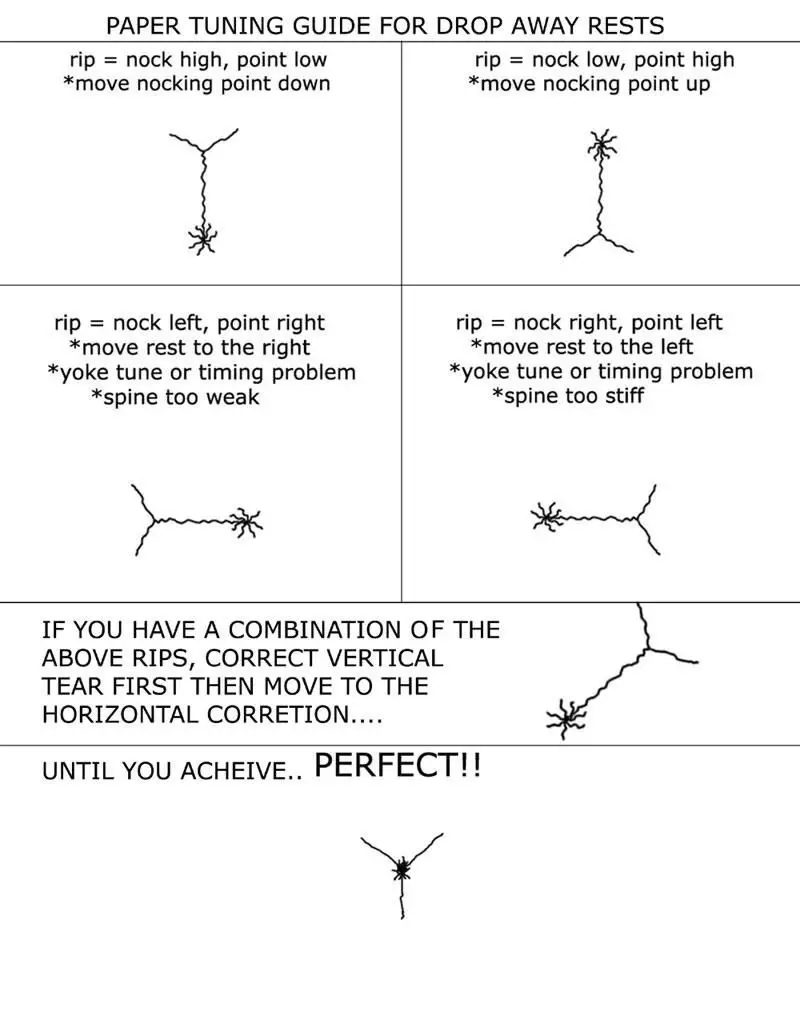Paper Tuning A Bow
Table of Contents
The paper tuning aims to tune the arrow flight perfectly so that it causes a perfect paper tear like a ‘bullet hole’. The arrow rest, nocking point, cam timing, grip, and arrow spine need to be perfect for a perfect paper tear.
It’s relatively easy for one to do in a small space like a garage or backyard. Paper tuning requires a bow, arrows, a frame that can hold a piece of paper that you can shoot through, and a target behind it.
Paper Tuning
Various tuning methods are acceptable and work well for people, but the most recommended one by the Gold Tip is the Paper Tuning Method. It helps the shooter for release aid and also bare shaft tuning when it comes to finger shooting. Another thing that Gold Tip recommends is utilizing the string loop when it comes to making use of release aid for compound shooters. It helps save nock pinch, facilitates a more focused and accurate structure, and helps in precise tuning.
You must make arrows shoot via a suspended sheet of paper from around 4 to 6 feet. You may then witness a tear as an outcome. Below mentioned are some of the adjustment illustrations to attain an ideal tune.
HOW TO PAPER TUNE A BOW
Possible paper tears and solutions
Here’s a list of tears, and the most common remedies for each.
- NOCK HIGH – Move your nocking point down, or your rest up.
- NOCK LOW – Move your nocking point up, or your rest down.
- NOCK RIGHT – Move rest away from the riser on a right-handed bow, toward the riser for a lefty. This tear also can mean your arrow’s spine is too stiff. Switch to an arrow with a weaker spine, or you can increase the point weight on your arrow, which will weaken its spine.
- NOCK LEFT – Move rest toward riser for a right-handed shooter, away for a lefty. This tear also can mean the arrow’s spine is too weak. Switch to an arrow with a stiffer spine, or reduce your point weight.


Here are the tables of errors and common fixation for each of them:
Expert TIPS
- Try spraying the vanes using an aerosol foot powder to find out any vane contact with arrow rest because vane contact can result in erratic arrow flight and cause inaccurate readings of paper tear.
- Two things are essential while initiating the paper tuning; Shooting form and Consistent release. You must try shooting with the help of each arrow quite a few times to make sure that you are receiving the authentic and consistent reading.
A Detailed Guide Of Paper Tuning A Bow
Paper tuning a bow occurs when the required archer shoots an arrow via a piece of paper, aiming to observe the rip it forms. This kind of rip is a ‘snapshot’ of the arrow’s flight at around 8 feet. It also depends on the outcome. Let us help the archer know what he must do to achieve a perfect arrow flight.
Paper Tuning Helps Remove Porpoising (up and down movement) and Fishtailing (left to right movement).
You will automatically achieve refined arrow penetration and accuracy when you achieve a perfect flight. The paper tuning can be time-consuming but can surely result in huge dividends within accuracy.
Required Checklist For Paper Tuning A Bow
Many factors can influence the outcomes of paper tuning. Let’s have a look at those essential aspects.
- Are you able to shoot with a torque-free grip?
- Are you able to shoot the required and correct draw length?
- Are you able to shoot the arrow with a proper spine?
- Are you able to shoot with good form?
- Is your arrow rest set up perfectly and not inhibiting with the fletchings of your arrows?
- Have you yoked tuned and examined the timing while shooting a solo cam?
- Have you kept an eye on the timing while shooting a two-camp bow?
- Is your required bow to spec?
If the answer to the above Qs is yes, YOU CAN PROCEED
To ensure that your paper tuning experience is relatively hassle-free and pain-free, it is ideal that you make sure that the form and quality of your equipment should not be something to be blamed for.
Ways To Paper Tune A Bow
- Fix a tight piece of paper to shoot through it properly
- Stand an estimated 8 feet away from the paper
- It would be best if you also drew your bow and leveled out a required arrow
- Sustaining an excellent overall archery form, you must shoot through the paper
- Study the results for a better understanding
- Make adjustments to your bow if needed and repeat the process till the ‘bullet hole’ is attained.
MORE FACTORS
Paper Tuning isn’t the last tuning method to tune the arrow flight perfectly and get the ‘perfect tear’ but the first step in process of tuning.
So let us have our touch on some of the other factors as well.
-
Bare Shaft Tuning
Gold Tip recommends the bare shaft tuning for any shot setup based on finger release. Using this technique requires two plain shafts and two fletched arrows. You must follow the examples mentioned below to refine the tune of the setup.
-
Optimal Tuning
The picture shows optimal tuning regarding bare shaft tuning methodology. Plain shafts and fletched arrows must show quite similar impact points.
-
Stiff Arrow & WEAK ARROW
-
LOW NOCK POINT & HIGH NOCK POINT
Top-Notch Paper For Paper Tuning A Bow
You can get a roll of wax paper from any nearby supermarket as it offers the best outcomes. You are required to keep the paper tight and stiff while shooting through it. The wax paper will also show you slight tears quite easily and more than any other paper.
Distance For Paper Tune
You must shoot arrows via a suspended sheet of paper from a distance of 4 to 6 feet and then analyze the outcome of the tear.
What Do You Mean By Tuning A Bow?
The tuning bow includes arrows, arrow rest, cam timing, and cam position adjustments. You can adequately set up a bow in spec and be out of tune. The arrows will start flying erratically when the bow is out of tune.
